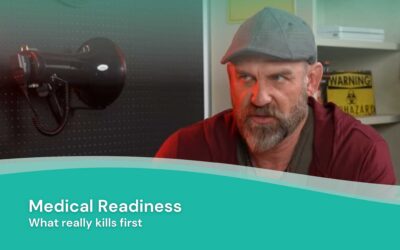

“Make Your Own Bread”
As we continue our preparedness series, learning to cook from scratch is one of the most important skills you can have. To begin with, there are many less ingredients needed to produce the same product. It is cheaper and you and your family eat healthier, resulting in overall increased health benefits.
Along with many other recalls this year alone, from meat to eggs to processed foods, ice cream, cheese, and on and on and on, I came across a massive bread recall, affecting 37 different types of bread. All types of bread, from dinner rolls to Hawaiian sandwich bread among others were in the recall. The bread has potentially been infected with one of two bacteria- The two bacteria that have caused the recall were Cronobacter sakazakii and Clostridium botulinum.
Cronobacter sakazakii, recently linked to the recall of infant formulas symptoms vary widely. At risk groups- infants and the over 65 age population and those with compromised immune systems can cause severe blood infections and meningitis. Infections are rare, with only2-4 cases each year are recorded.
Clostridium botulinum,C. botulinum spores are often found on the surfaces of fruits and vegetables and in seafood. The organism grows best under low-oxygen conditions and produces spores and toxins. Symptoms of C botulinum are The first symptoms). These are followed by neurological symptoms: visual impairments (blurred or double vision), loss of normal throat and mouth functions (difficulty speaking and swallowing; dry mouth, throat, and tongue; and sore throat), general fatigue, lack of muscle coordination, and difficulty in breathing. Gastrointestinal symptoms may include abdominal pain, diarrhea, or constipation. Death is usually caused by respiratory failure and airway obstructions. When the diaphragm and chest muscles become fully involved, breathing is affected and results in death from asphyxia.
Other reasons to make your own bread
- Unwanted commercial food additives, such as caramel coloring, dough risers, and many more ingredients have been linked to health issues. The USDA has a list of ingredients on their website that they consider “GRAS” generally accepted as safe for many products, not just bread. However, some of these products considered GRAS have been linked to diabetes, cancer and heart disease. (scroll to bottom of linked page for references)
(You may want to read about the 11 banned ingredients still allowed in the US)
- More economical– The average person in the US consumes 53 pounds of bread a year. That adds up to 212 lbs of bread a year. At $2.50- $4.00 a loaf at the supermarket that can add up to between $530 and $848 a year. To make a loaf of bread will cost between 80 cents and just under 2 dollars, depending on how and where you buy your ingredients and type of bread you are making.
- Safer– You are less likely to need to throw out a single ingredient to make the bread than the entire loaf in the case of recalls.
- A new skill learned. For those of you on the road to self-sufficiency, there are many cooking classes online to start learning the basics of the different types of flour and how they are used.
- Sourdough, the original bread, before the adoption of dry yeast is more nutritious than standard bread. Pro Home Cooks has a playlist to help get you started if you are so inclined.
- Either way (using dry yeast or sourdough), making your own bread helps cut the apron strings of dependence on the system.
For those with wheat sensitivities and other allergies I will be writing a post on this soon. (I have firsthand knowledge on this and can offer lots of tips and strategies to negotiate eating out, cooking, etc.)
Lifesaving Medications
Recent Posts
Keeping you informed and safe.
FAQ: Our most commonly asked questions about Jase
If you’re considering Jase, chances are you’ve paused and thought, “This makes sense, but I still have a few questions.”You’re not alone. Here are the most common ones we hear, answered plainly. Is this really doctor-prescribed? Yes. Every Jase order is reviewed by a...
Medical Readiness: What Really Kills First
When Disaster Strikes, It’s Not Hunger or Thirst That Takes the First Lives In every disaster zone, from hurricanes in the Caribbean to war zones in Ukraine, the pattern is the same. People worry about food and water, but it’s infection that kills first. A small wound...
Exploring Dr. William Makis’ Hybrid Orthomolecular Cancer Protocol: Focus on Ivermectin and Mebendazole/Fenbendazole
Exploring Dr. William Makis’ Hybrid Orthomolecular Cancer Protocol: Focus on Ivermectin and Mebendazole/Fenbendazole *Disclaimer: This article is for educational purposes and does not constitute medical advice. Always seek professional guidance.* In the evolving...



